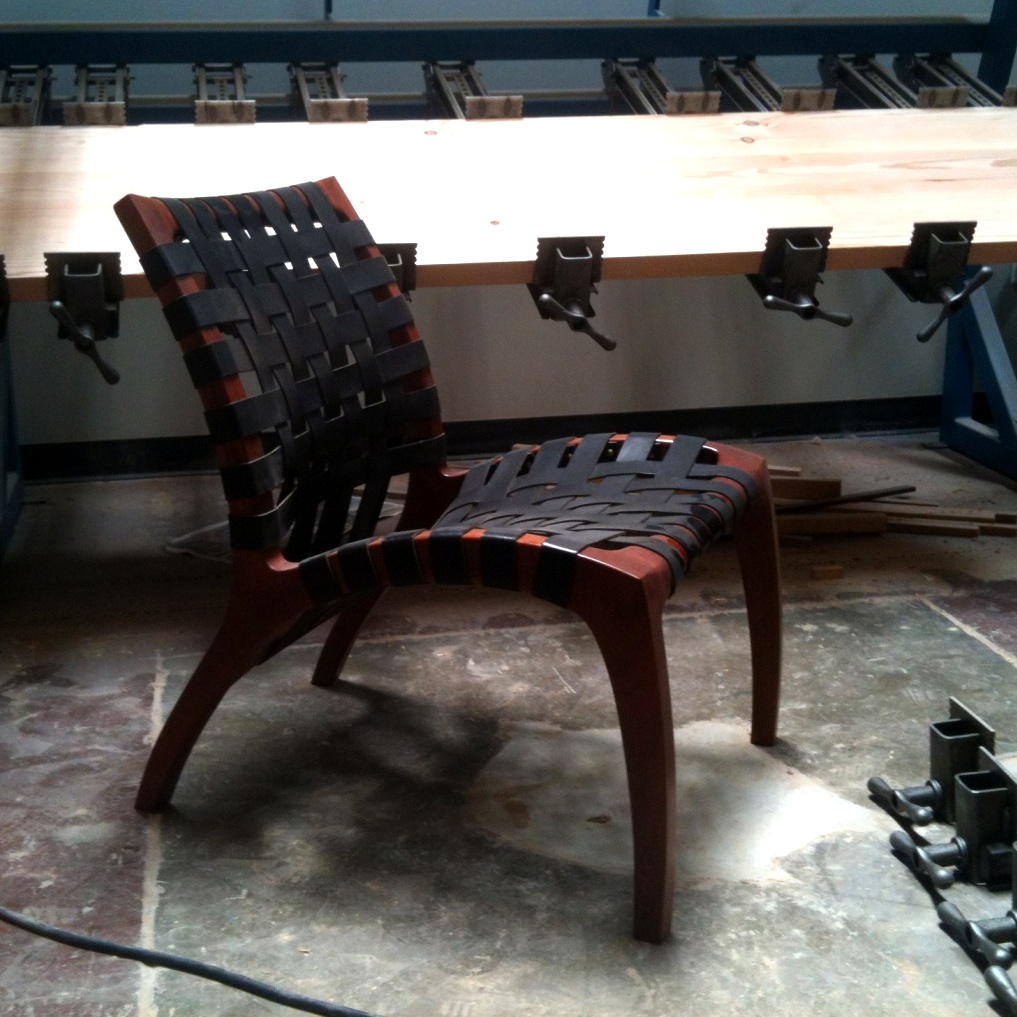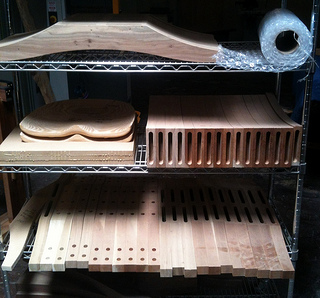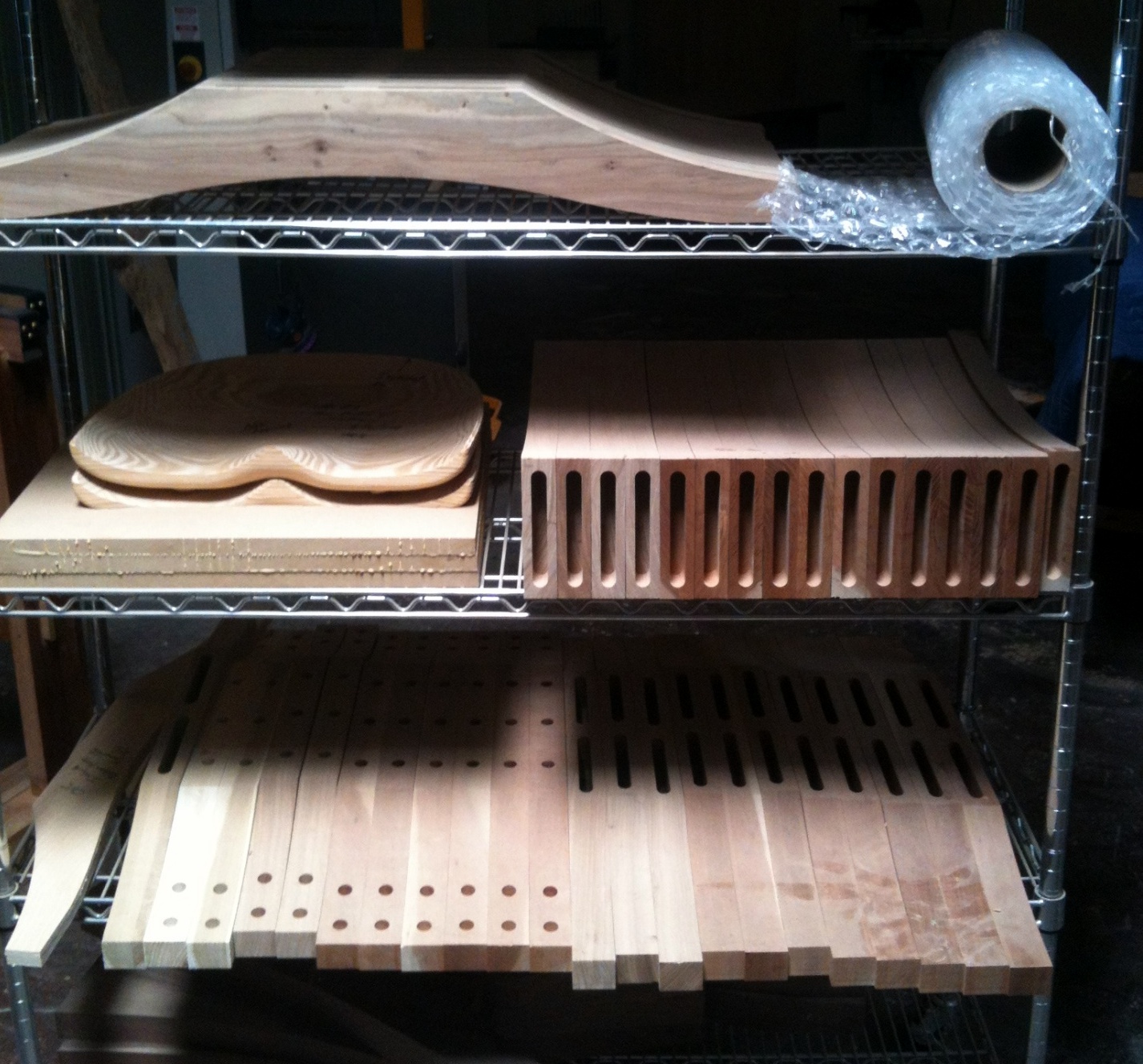 St. Louis is currently celebrating Design Week, focusing a spotlight on some of the most innovative designers and professional creative firms in the greater St. Louis Metro Area. Events are being held throughout the City, and especially along St. Louis’ central corridor, from Downtown west to the Center of Contemporary Arts (COCA) in University City. From award-winning restaurateurs to global architectural professionals, St. Louis is home to multiple practices worthy of international design and creative merit. And, there will be much celebrating.
St. Louis is currently celebrating Design Week, focusing a spotlight on some of the most innovative designers and professional creative firms in the greater St. Louis Metro Area. Events are being held throughout the City, and especially along St. Louis’ central corridor, from Downtown west to the Center of Contemporary Arts (COCA) in University City. From award-winning restaurateurs to global architectural professionals, St. Louis is home to multiple practices worthy of international design and creative merit. And, there will be much celebrating.
However, the future of how design is fundamentally improving St. Louis as a City may actually be found elsewhere, not in the central corridor but near the River Des Peres and the southernmost edge of St. Louis’ border. Surprisingly, the Patch Neighborhood, a heavily industrial & blue collar part of the City just south of Carondelet, is the new home of an incredibly innovative design & manufacturing practice that would be a treasure for many larger cities.
How this company found its home in St. Louis is as important as what they create.
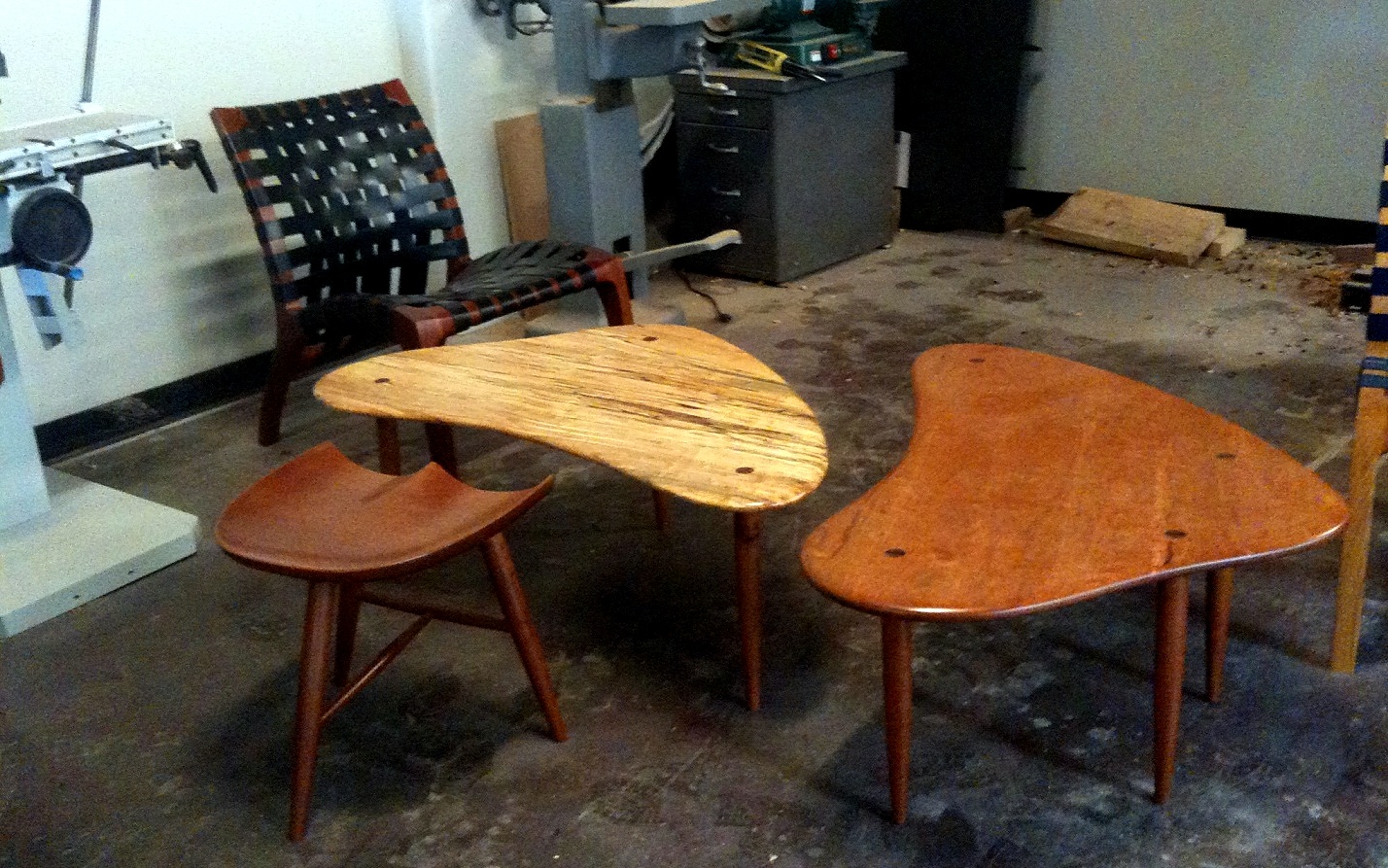
This firm is Goebel & Company Furniture, an independent producer of high-end, yet very reasonably priced hardwood furnishings with a distinctly modernist inspiration. This inspiration is carried forward in a minimalist design theory, bypassing excessive ornamentation in pursuit of elegance in simplicity, seeking a more pure form of functionality in use. And in pursuing this minimalist approach, the end products are designed to serve long lives as heirloom-quality pieces. Utilizing both hand-made finishing and computer assisted design, their work can be said to compete head-to-head with high-end brands like Knoll and Artemide. Current offerings include conference/dining tables, side tables, valets, platform beds, cabinet sets, stools, and possibly the most comfortable chairs that I have ever sat in.
The company was founded by Martin Goebel, who sees his unique business model and design work fulfilling a design mission: “Above all facilitating the growth of personal significance through longevity between individuals & families and their furniture.” Martin’s a St. Louis native who returned home after earning his Masters of Fine Arts in Furniture Design at the prestigious Rhode Island School of Design. He first learned to make furniture in northern California at the College of the Redwoods before completing his Masters at RISD and his Bachelors in Fine Arts at the University of Missouri St. Louis.
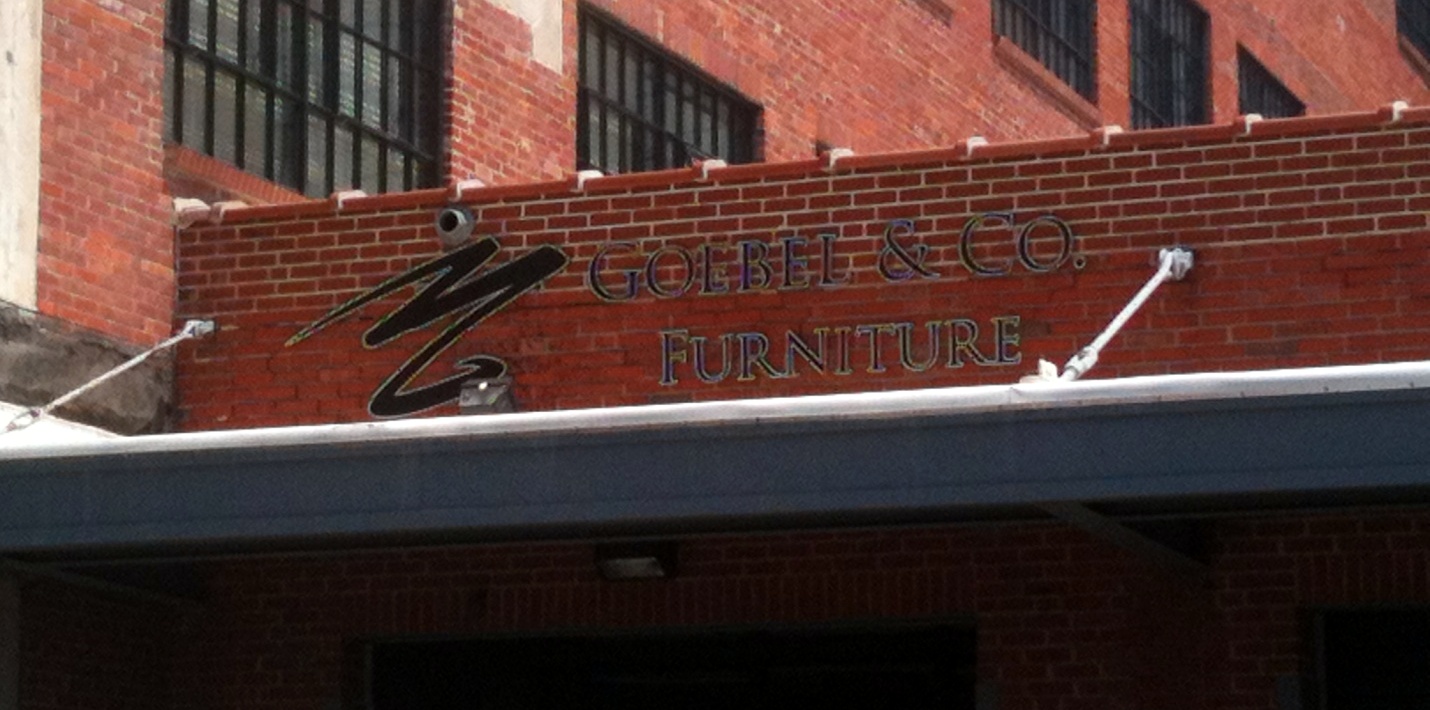
Goebel & Co. will be participating in St. Louis Design Week at the FORM Contemporary Design Show, September 28-29, sponsored by the Luminary Center for the Arts, and held at the Ely Walker Building, 1520 Washington Avenue in Downtown St. Louis.
For Goebel, choosing St. Louis has much more to do with the resources the City has to offer his company than just a desire to return to his family’s home town. In fact, basing Goebel & Co. in St. Louis capitalizes on a number of competitive advantages innate to the City, its business culture, its geography, and the revitalization of the City’s classic building stock.
St. Louis’ first competitive advantage is found in the hardwoods preferred for their furniture being native to Eastern Missouri, including classic offerings in Cherry and Walnut, but also specialty woods like Siberian Elm which produces a distinct blonde coloration to the woods. One of the furnishings’ most distinctive features is that woods are sourced from older trees with tight age rings, producing a concentrated, complex grain finish not readily offered by most national furniture companies. These woods are sourced predominantly from whole trees, but eschewing deforestation in preference of selecting logs from storm-fallen trees and those cleared from local construction sites, even participating in replantings of saplings to make up for their net intake of aged trees.
Meanwhile, as saw mills have recently closed in the metro area, Goebel & Co. have been able to buy from their older inventories. Through the liquidation of a mill in North City, they were able to acquire a collection of 20’ aged precut Douglas Fir planks. At another sawmill liquidation in Highland, IL, they were able to purchase almost forgotten yet highly preserved wood, which were originally cut for planes in World War II. These saved woods will find new life in custom built pieces.
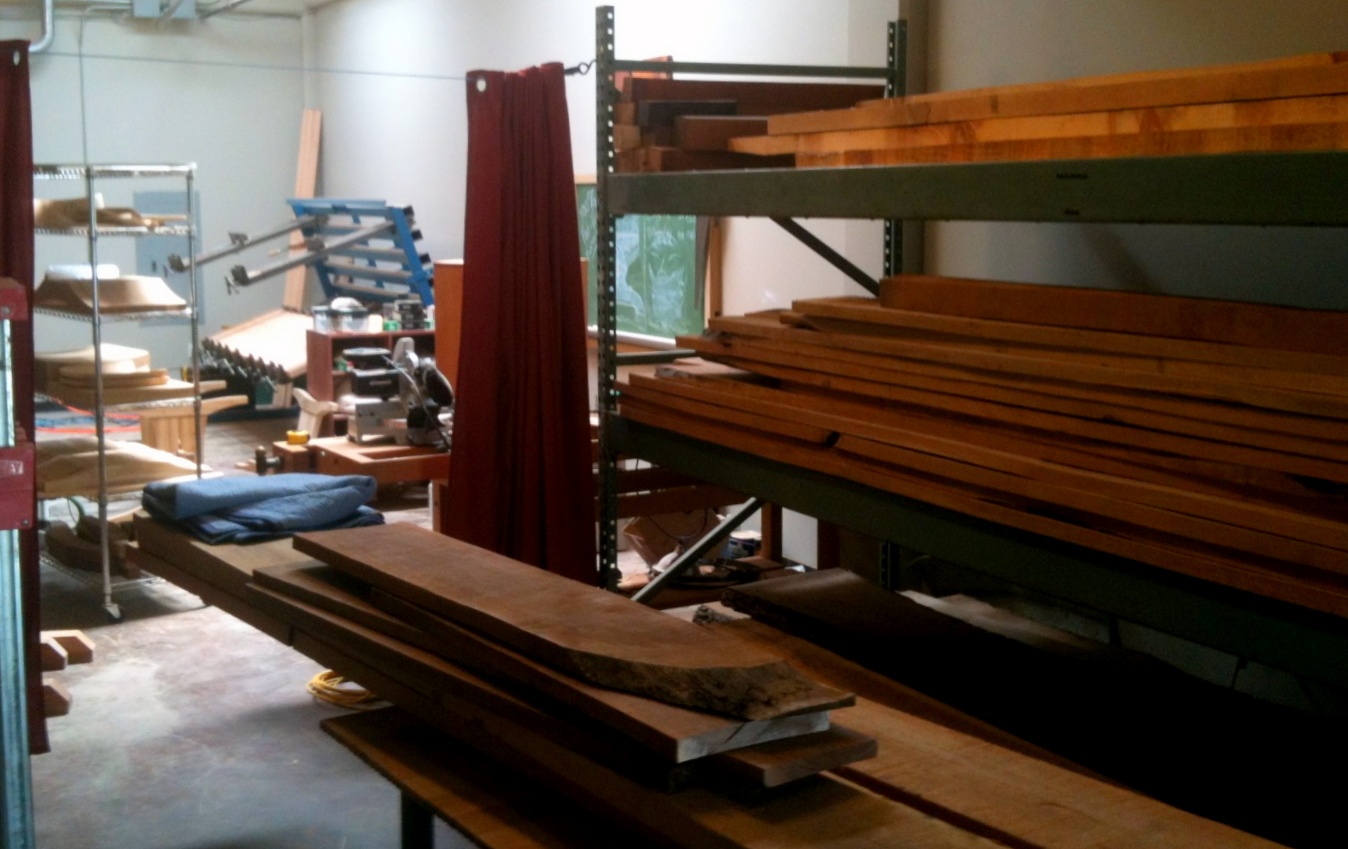
St. Louis’s second competitive advantage is that the City is home to a strong industrial cluster in woodworking, with talented professionals in high quality milling, carpentry, and artisanship that helps support the firm’s operations. While Goebel & Co. is one of only a handful of furniture manufacturers in St. Louis (and the only producer of true high-end wood offerings), the area remains an impressive home of wood craftsmen with respected niches in kitchen cabinetry and even pool table production. It is through this trained workforce that they have been able to further their talent base.
More significantly, Goebel & Co. has a network of technologically advanced sub-contractors in the St. Louis Metro Area. The company has a proprietary CAD modeling program for the primary cutting of the logs they have developed for furniture use. Goebel & Co. outsources their log inventories, based on their digital formulations, to local companies in this industry cluster, with a strong concentration in South City. By outsourcing to local saw mills, they can concentrate their own efforts on hand finishing their furniture while being able to best monitor the milling and drying of the woods, and in the process help create more work hours for these local companies. Then, when the major cuts are completed, assembly and hand finishing occurs in-house at their manufacturing facilities in South City.
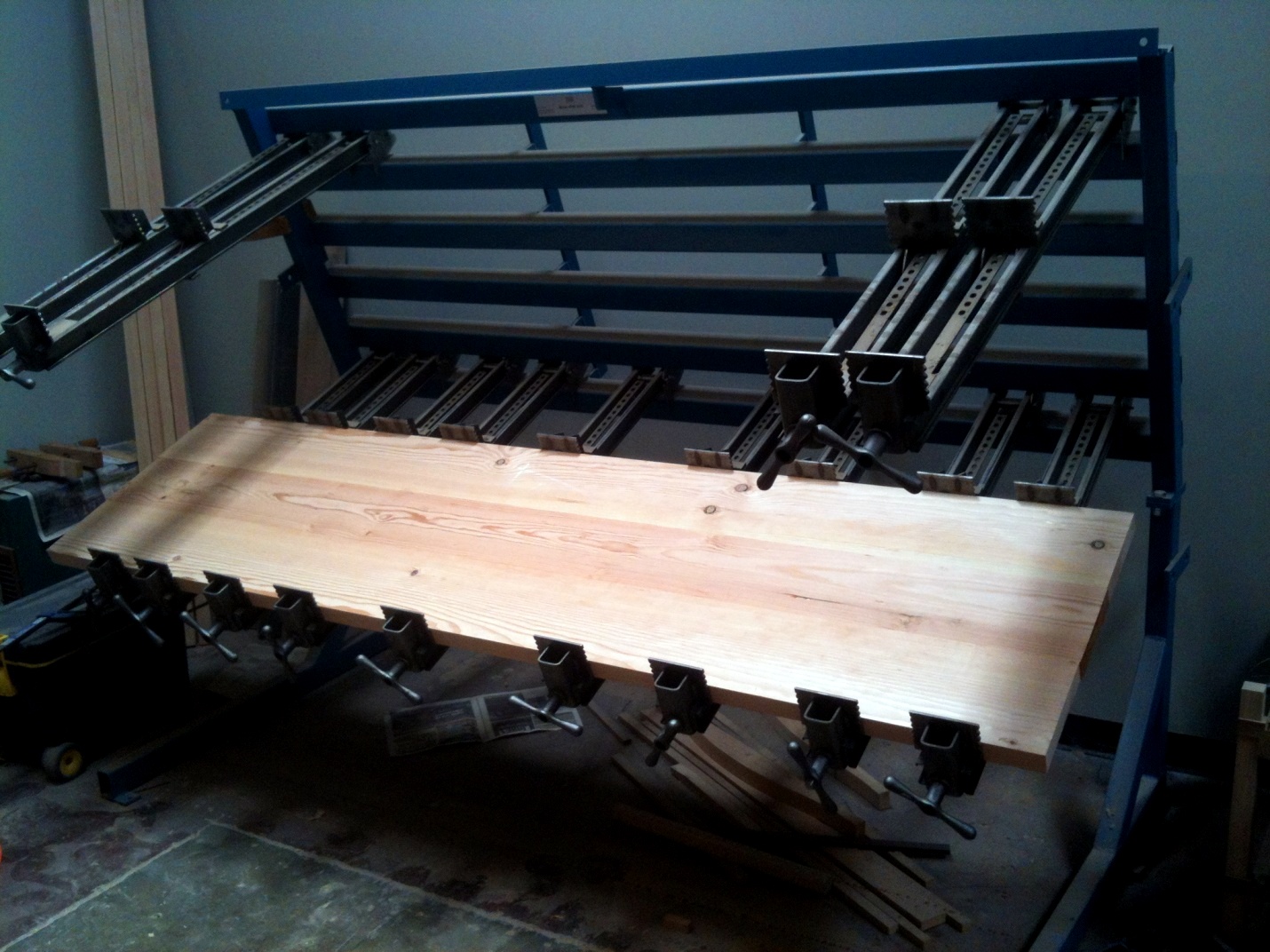
And it is these facilities that provide their greatest reason for choosing St. Louis.
The Temtor Building at 8125 Michigan is home to Goebel & Co.’s operations. Originally the home of the Temtor Fruits and Product Company, and later finding new life as a syrup manufacturing plant for the Coca-Cola Company, the hulking four-story, red brick industrial site sat empty for years before being redeveloped into a mixed-use residential, retail, and professional building, featuring 77 new modern loft apartments miles away from similarly rehabbed buildings along Washington Avenue and Midtown. Demand for these lofts has been remarkably strong since its opening in 2011, bringing new life to what has largely been a forgotten part of the City.
At the Temtor, the largest and most well known new business to call it home is Perennial Artisan Ales, joining the likes of Schlafly and Urban Chestnut as one of St. Louis’ growing cluster of microbreweries. The brewery is recognized for its lineup of a Belgian Blonde, a dry-hopped Pale Ale, and a French Saison brewed year round, but it is also known for its micro batches produced intermittently throughout the year, such as the Black Walnut Dunkel and Strawberry Rhubarb Tart. As well as the brewery itself, Perennial’s facilities feature a tasting room with a staffed kitchen, as well as an outdoor deck. Popular nights for Perennial include Thursdays, when a new micro-batch of custom beers is released every week.
Other businesses at the Temtor include a sun tanning salon, the Davis Street Market Deli, a self-storage facility, and Southside Fight Club, a mixed martial arts gym. Goebel’s location is easily identifiable for its large wooden planters outside their doors, housing saplings for the trees that they use.
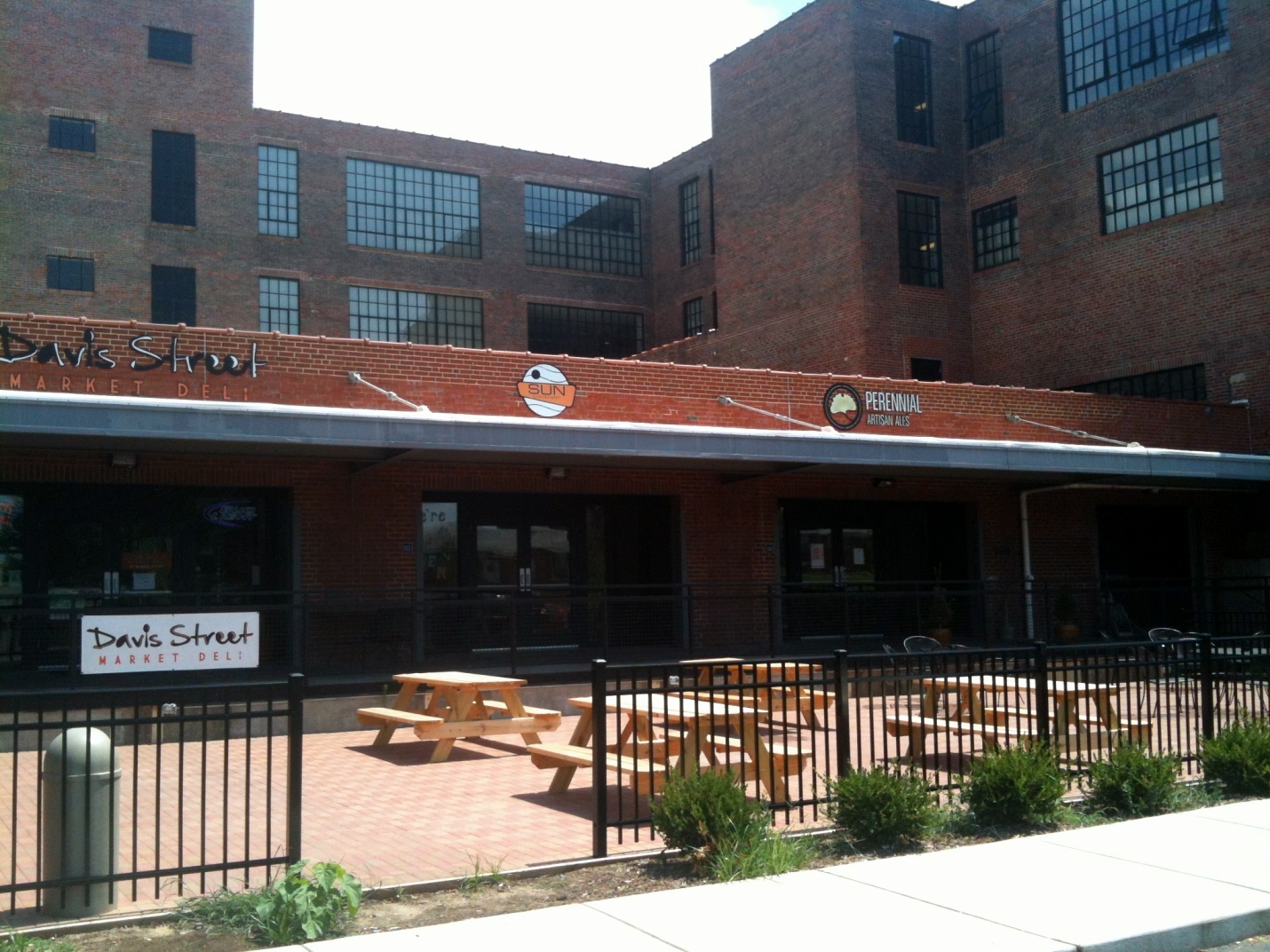
As the building was being redeveloped, Goebel & Co. were provided the opportunity to work with the developers in order to fulfill their needs as a custom manufacturer. These needs include very significant power requirements for their large industrial saws and wood finishing components, as well as an air filtration systems for all the sawdust produced. While the new Temtor Building was not originally conceived as a home for a manufacturing company, cooperation between the developer and Goebel & Co. has allowed for their needs to be met as warranted. After all, having served as an industrial factory in the mid-20th Century, the building certainly has the architectural strength to support both a new manufacturing operation and a brewery on the same site.
And from here, after they have completed producing their furniture, Goebel & Co. is able to capitalize on St. Louis’ geography and complex, diversified transportation infrastructure. Besides their proximity to wood suppliers and outsourcing partners from their operations at the Temtor, they are a short drive to I-55 and the other major highways that connect St. Louis to the rest of the country. Meanwhile, Goebel is rather appreciative to St. Louis’ non-highway shipping hubs, especially Kosciusko, the heavily industrial sector between the Mississippi River and the Soulard neighborhood that serves as a stable multimodal transportation hub of trucking, railways, and maritime shipping. Just a few miles north of their South City facilities, they are readily available to ship out products across the rail lines.
The end result for all of these competitive advantages is that it allows for Goebel & Co. to operate their business that provides them with ample sources of raw materials, the ability to hire new talent & outsource labor-intensive projects, operate a full manufacturing plant in facilities that fully meet their production and management needs, and access nationwide shipping for final sales of their products.
Most significantly, total production costs are far more competitive than in larger market cities. St. Louis’ affordability for his business was the greatest draw for Goebel to locate his company here, as opposed to more traditional metro areas for high-end furniture companies in the Northeast and West Coast than in the Midwest. In fact, the only other metro area in the Midwest for a company like his is Chicago, which he strongly considered, but Goebel’s analysis is that it would cost his company three times as much to operate there. In turn, by basing themselves in St. Louis, Goebel & Co. are able to offer their furniture at a much more competitive price. And in doing so, they are able to better compete against more costly companies offering furniture at equal or lesser quality, whether gauged by aesthetics or materials, let alone both.
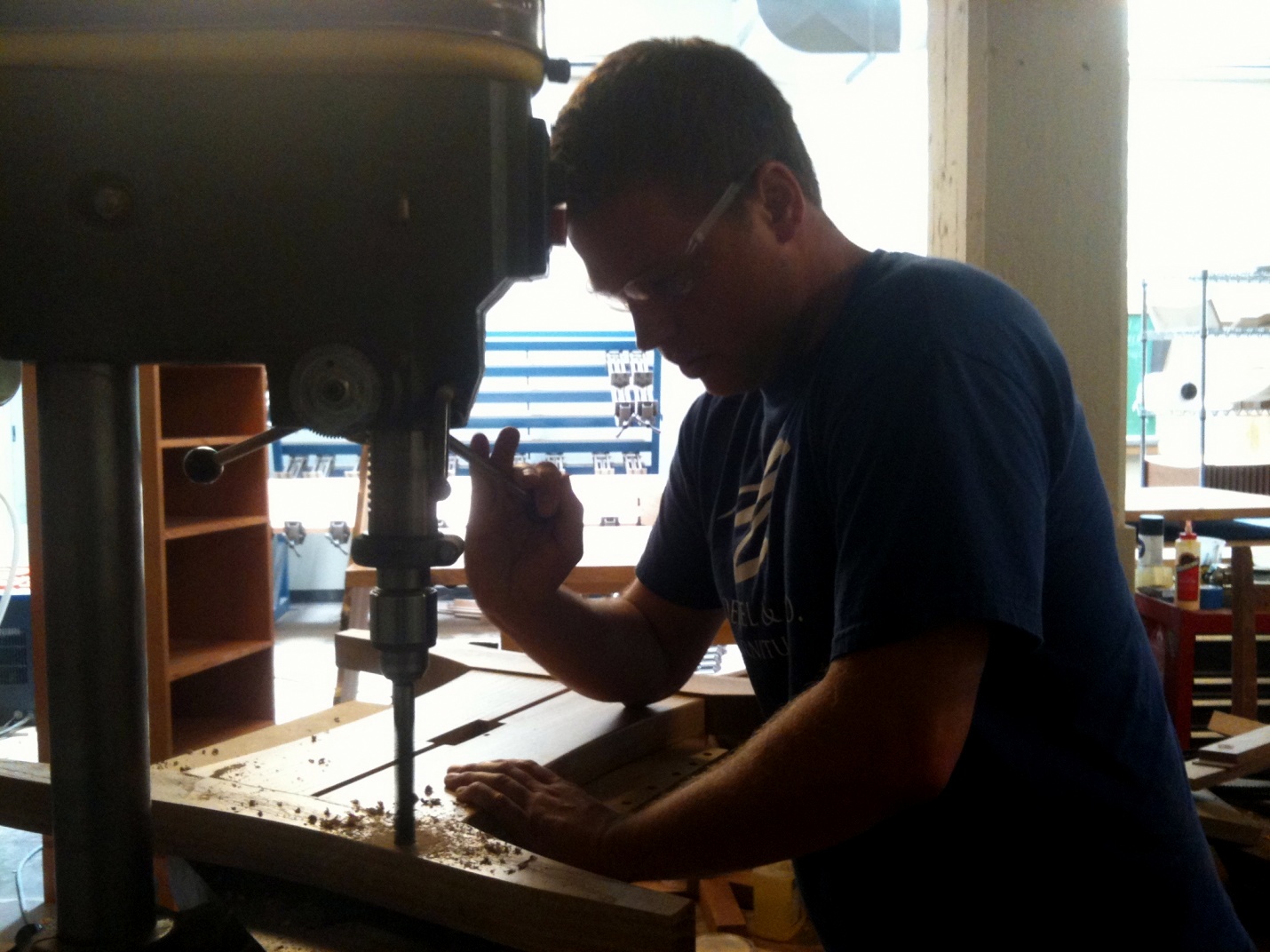
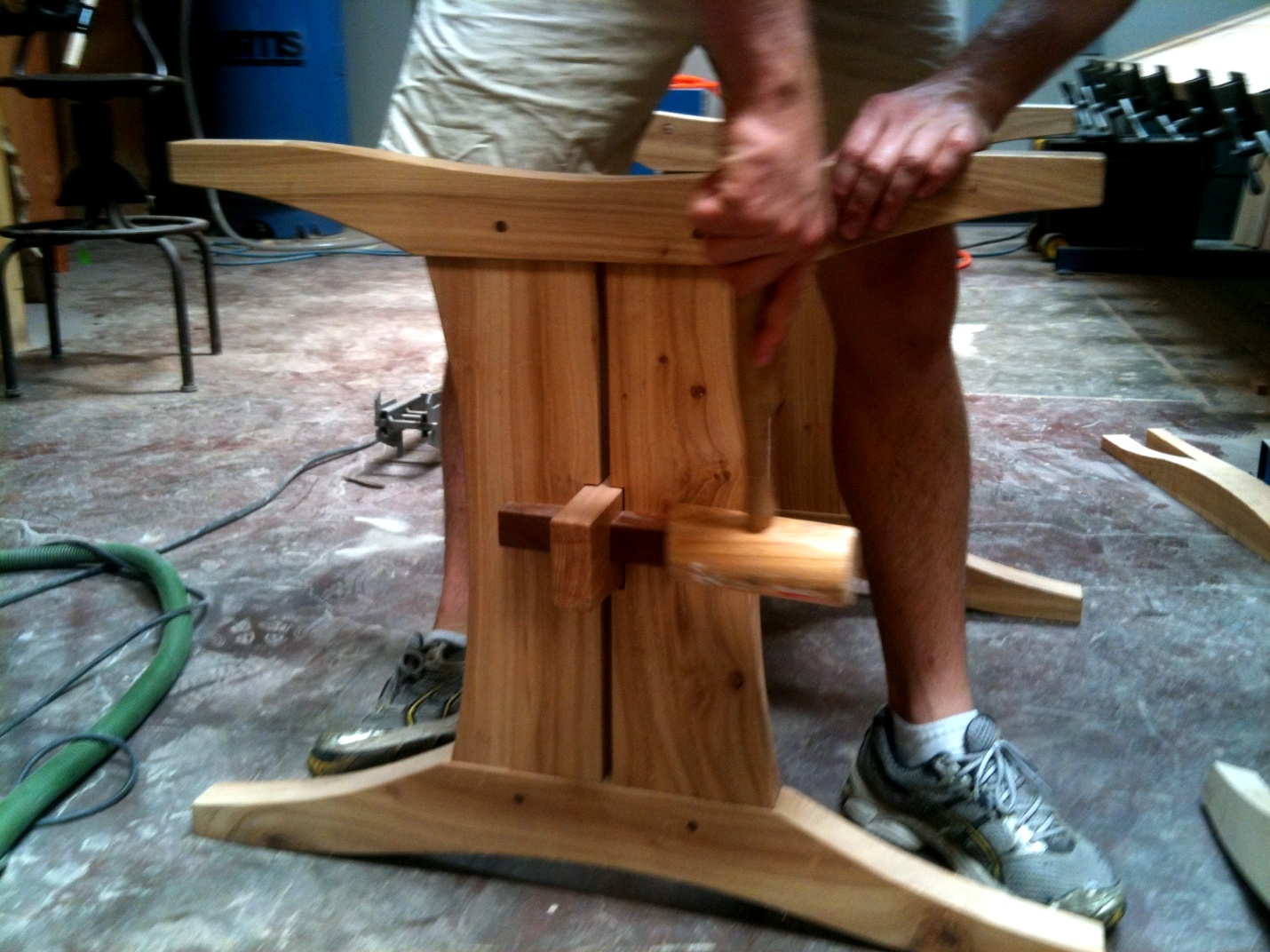
What does this company’s success mean for St. Louis?
First, it further demonstrates the strong talent base the City has to offer in creative industries. As with the other creative designers being celebrated in St. Louis Design Week, Goebel & Co. brings attention to local talent in independent furniture design & production. While the only local manufacturer of exclusively wood-based high-end furnishings, they bring attention to the local industry, with other companies such as Zollinger Furniture Company, Shubert Design Furniture, and the niche furniture division of cabinet company Mwanzi. And of course, all of these companies are complementary of Furniture Brands International. Headquartered in Clayton, FBI remains one of the nation’s largest manufacturers of furniture under the popular brands of Broyhill, Drexel Heritage, Hendredon, Hickory Chair, Lane, Laneventure, Maitland-Smith, Pearson, and Thomasville (and continues as an enterprise from its original incarnation: International Shoe Company).
Just as much, it furthers St. Louis’ base of talent in the woodworking industry. From cabinetmaking to saw mill operations and custom furniture design, the City has a strong pool of talent that can be capitalized by enterprises that seek to utilize these skilled workers towards their own end. Indeed, Goebel has said that St. Louis has a great number of woodworking artisans who could work in other companies similar to his, if only given the opportunity to be employed by a group that will provide them capital & management to manufacture at a sustainable volume. Goebel & Co. prove that opportunities exist for smaller, independent manufacturing operations to start fresh, and even grow, amidst our nation’s ever-stalled service-based economy. Truly, a smart furniture company seeking talent can find better environments in which to invest than St. Louis.
Outside of the furniture, woodworking, and design-based industries, Goebel & Co. demonstrates the value in St. Louis’ building stock. For the past ten years, we have seen a renaissance take place with constructive reimagining of the City’s industrial building stock, from garment factories-turned-lofts along Washington Avenue & throughout Downtown to apartments in the Continental Life Building in Midtown and the movie theater/bowling alley/apartment complex that is the Moolah Theater.
With the Temtor, we see not only apartments, but retail, services, complex manufacturing, and a full brewery. Not only that, but the Temtor’s successes demonstrate the value of investing in parts of the City that have all but been forgotten. After all, the Patch neighborhood is truly one of the last places that people would consider when thinking of new loft apartments at almost full capacity with young professional occupants, with retail, professional services, and a small dog park. In fact, the Temtor’s existence has done a great deal to help stabilize a part of town long neglected, with a history of high residential occupancy but little employment opportunities, with sporadic real estate ownership, and with families hesitant to safely enjoy the outdoors with their children. Now, the Lion’s Club Park across from the Temtor has become a much more welcome site, due in large part to how the formerly vacant manufacturing plant is now full of productive residents and frequent retail clients sharing their neighborhood.
It absolutely must be said that none of this success could exist without the existence of Tax Credit programs facilitating the Temtor’s revival, spurring the opportunity for Goebel, Perennial, and the other companies to find a home, let alone for the creation of the 77 loft apartments. Like many historic rehabs in St. Louis, the use of Tax Credits, including Historic Tax Credits, were essential to the redevelopment taking place, and is especially prominent as this one has taken place in a part of town that did not boast large per capita incomes or a thriving business community.
Partial funding for the Temtor’s $27 million redevelopment was sourced through:
- Missouri State Historic Tax Credits, after being determined that the project was approved for qualified rehabilitation of a historically significant building towards new income-producing usage
- Missouri State Brownfield Tax Incentives, which provide financial incentives for the redevelopment of commercial & industrial sites that are contaminated with hazardous substances and have been abandoned or underutilized for at least three years
- Tax Increment Financing (TIF), discounting a portion of taxes garnered from new business sources that would not exist if not for the project’s coming into existence. And unlike many other TIFs that have taken place in the St. Louis Metro Area in recent years, this one fully was for investment in an economically neglected environment that greatly appreciates the influx of new capital and investment
Tax Credit programs used in the Temtor’s construction must be distinguishable from other Tax Credit-funded programs in the area, notably the former Carondelet Coke plant about a mile away, and on which the Post-Dispatch has recently run a series of articles questioning the effectiveness of such funding. It’s rather easy for these programs to be mixed up with each other, as one’s called Carondelet Coke and the other is in the former Coca-Cola manufacturing facility. But while questions remain about the large-scale environmental cleanup of the Carondelet Coke site, the Temtor Building’s successes have produced sound, quantifiable economic successes and increased the overall quality of life for both the Patch and Carondelet neighborhoods.
As the State of Missouri considers the long-term viability of Tax Credit programs, the success of the Temtor Building’s redevelopment, bringing in new businesses and residents to an economically stalled part of St. Louis, must be considered. Truly, the use of Historic Tax Credits was absolute to this project taking place, as well as for the related successes to be recognized.
Tax Credits were only part of the development equation. The majority of the funding can be attributed to:
- Steins Broadway, the developer of the Temtor
- Bridge financing through a consortium made up of Centrue Bank, Excel Bank, Truman Bank, and First Community Credit Union
- An eight-figure investment by the Carpenters Union Pension Fund through a HUD-insured mortgage
The most interesting funding source may be the Carpenters Union Pension Fund. First, its actions as a Private Equity Fund sought out investment that the Pension Fund will utilize to produce a stream of income through rental incomes, a creative revenue source. Second, by investing in a development project, it helped to create multiple work opportunities for its Union members, who were vital in actually redeveloping the interior of the Temtor. Such Private Equity investments are now common from labor unions, which utilize the strength of their pension funds to provide work opportunities even in volatile economic times and the bottoming out of comparable real estate developments in recent years. Therefore, by making such investments, they are able to recognize relatively stable investment income while providing more opportunities for employment by its members.
And quite serendipitously, their work helped the Temtor to come into existence, allowing Goebel & Co. to establish their operations in the South City building, and through them helping to facilitate increased work opportunities for woodworking artisans throughout St. Louis.
So this week, let us recognize Goebel & Co. Furniture for contributing to the design and creative community of St. Louis; the related companies with whom they work; the development team and investors that allowed the Temtor Building to come back into being; and the State of Missouri’s Historic Tax Credit Program, without which none of these successes would come into being (at least, not in St. Louis).
